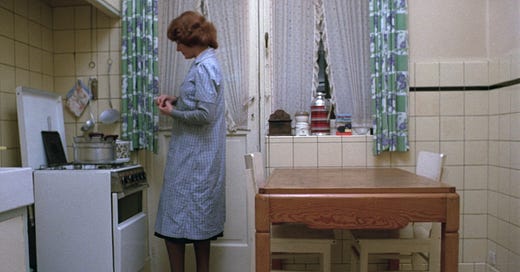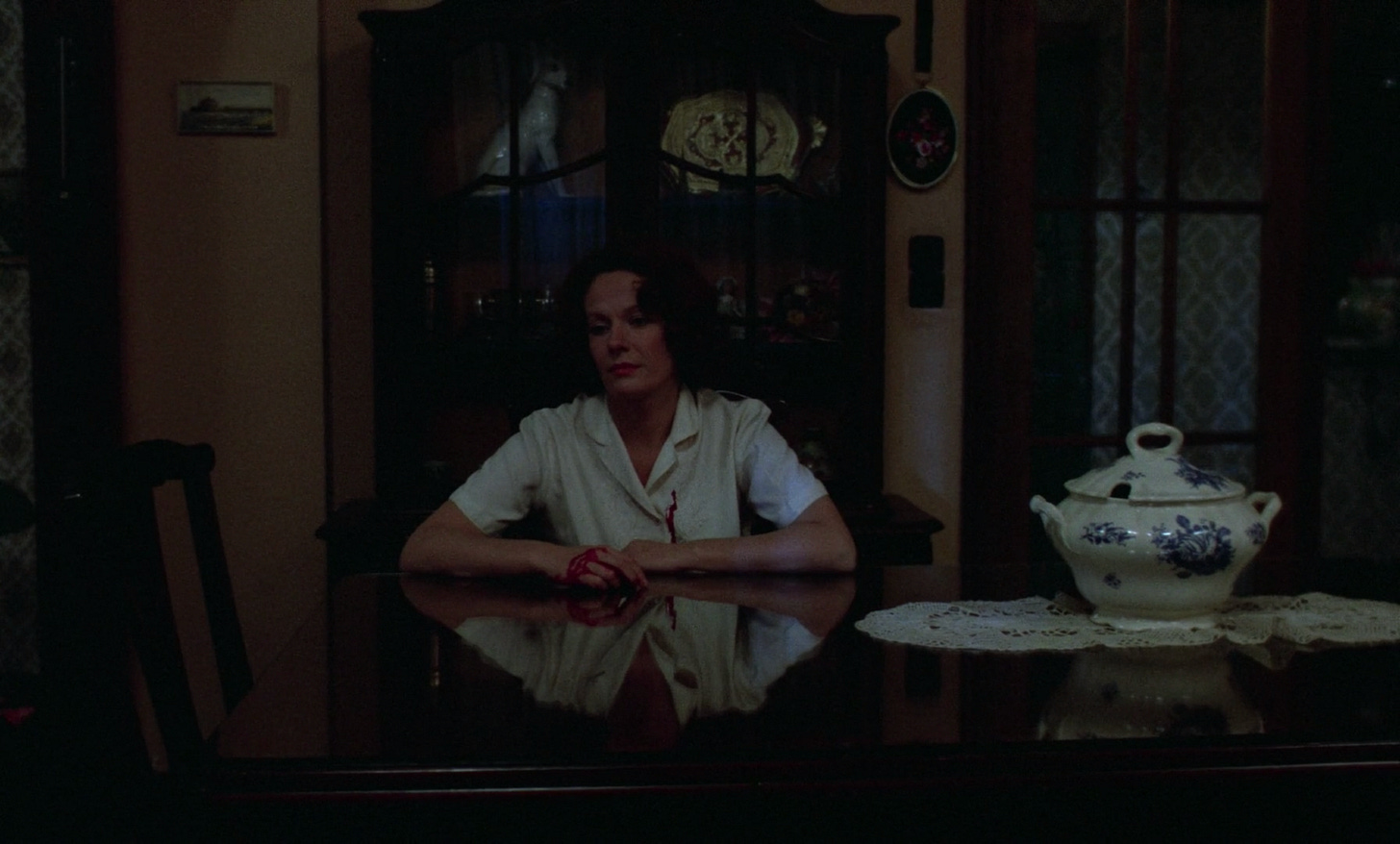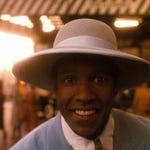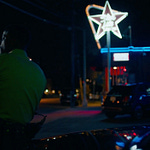Dear friends,
Towards the start of Chantal Akerman’s documentary Hotel Monterey (1972), Babette Mangolte’s camera captures three women waiting in the lobby of the titular building. One of them gets up and stands frame left; another stubs out her cigarette and leaves; our first subject then walks out of frame. The third remains on the lobby sofa, chewing on something and seeming a mite self-conscious as she glances back towards the camera a few times. This shot only lasts for 67 seconds, but with its fixed position (and only imperceptible movements) it carries a sense of obstinacy; it continues to roll, unabated, through its subjects’ visible indifference or discomfort.
We are asked throughout Hotel Monterey—and so many of Akerman’s films—to consider the unique relationship of the motion picture camera to the real world: at once, a world that contains the camera, and a world contained and re-encoded by the camera. Following this lobby shot, Akerman and Mangolte get into an elevator; we see, from their own and their camera’s perspective, the door open onto a hallway of waiting guests, who then hesitate and ultimately decline to join them. Here, the camera literally becomes an intruder, physically obstructing a “normal” course of life.
The obstinacy represented throughout by this almost entirely immobile apparatus is closely linked with one of the film’s other major motifs: that of the boundaries between public and private spheres. Hotel Monterey builds this using its space, moving cleverly over the course of the hour between lobby, elevators, corridors, rooms, rooftop and cityscape, each of which implying their own ways of thinking, moving and being. And, for the viewer, a question arises whenever another human appears on screen: why should we have the right to stare at people in the first place—is it just because they are in public?
Jeanne Dielman, 23 quai du Commerce, 1080 Bruxelles (1975) is built around the spectator’s feeling of intrusion, which is closely linked with intimacy—that is, in order to intrude, one must be, or become, close to their subject. Akerman and Mangolte mine the discomfiture of this peculiar binary through a careful, analytic visual style that flattens Delphine Seyrig’s housewife protagonist into her surroundings. Even when she leaves her apartment, the visual grammar remains the same. Jeanne is constantly treated as if the subject of surveillance while we, of course, are the voyeurs.
But then, this has tended to be precisely how the housewife archetype is seen on film, no matter their status. It can be considered something of a structuring joke that this is a deconstructed “woman’s film”: a domestic narrative that toys with melodrama conventions; one that could be sold, not quite dishonestly, with the lurid tagline, “Sex! Food prep! Murder!” And, as discussed at some length on the podcast, Akerman builds her film around a blackly comic use of the “female hysteria” trope, with Jeanne’s unexpected petit mort precipitating her apparent downfall. But the film, obviously, is not really a melodrama—and one of its distinguishing stylistic features is the way it demands and builds its own unexpected conditions and patterns of observation. A simple, common description of Jeanne Dielman is “slow”. Well, sure, but it also has quite the variety of slownesses, which use the intimacy afforded us—the very idea of being given this window into a life—to create a unique emotional knottiness. What are we bored by? What do we sympathise with? What are we critical of? Akerman’s assertions that her lengthy experiment is designed to leave in the “mundane” domestic actions usually excised from dramatic films, to become something of a tribute to her own mother and women like her mother, can be taken as both accusatory and knowing: we should perhaps feel guilty whenever we tire of Jeanne Dielman’s rhythms, though of course this tiredness—this deliberate attempt on the part of the filmmaker to frustrate our spectating experience—is fully intended. The film cannot work if we are bored, yet it can only work by endeavouring to bore us.
But “boredom” is only one lens through which to examine the film’s methods. It remains, equally, a very exciting and startling experience and, indeed, almost celebratory. And its particular voyeuristic feel is what weaves together its many spiralling complexities—obstinacy is intrusion is intimacy and so on—via sheer stylistic clarity. This is a deep film, but not necessarily a difficult one. As we continue to watch, to sink in to the careful and oft repetitious actions, to make our attempts to read Seyrig’s ingenious, closed performance, we gain the distinct impression of being first admitted, then eventually invited in, to a space so personal as to not—if only at first glance—actually contain any semblance of “action” or “performance”. Again, it is both comforting and disorienting; a calmly hypnotic work that wants to keep us distant. And by giving the viewer a space so apparently devoid of cinema’s expected contents and stylistic flourishes, Akerman makes it quite clear that how we watch is intrinsically tied to what we watch.
A key question being asked, ultimately, is not just why certain actions and images are left out of so much art, and so much mainstream and “accepted” art, but why, more broadly, certain things should be considered “private” in the first place. One thinks of the sex scene in Akerman’s Je tu il elle (1974), that so disrupts what one thinks of as a sex scene. This nonpareil artist’s exploration of social boundaries is far more productive (and, indeed, more deeply moving) than your paradigmatic “equal opportunities offender” so intent on simply pushing or breaking those boundaries; Akerman wants to explore what the “line” means in the first place, how it works, why it is, what it can do. Whether she’s directly confronting us over the role of the camera in a midst of a real, quotidian life or playing with a character’s relationship to their artificial settings, Akerman is always worth watching and rewatching for the way she has so thoroughly remoulded what watching is.
As ever, thanks for listening—and we apologise for the lengthy delay since our last episode and post. Stay tuned for a blockbuster episode #8 in the coming weeks; in the meantime, please do leave us those sweet, sweet five-star ratings on Apple and Spotify and, of course, share us around with your awesome art-loving pals!
—Calum & Eddie


















Share this post